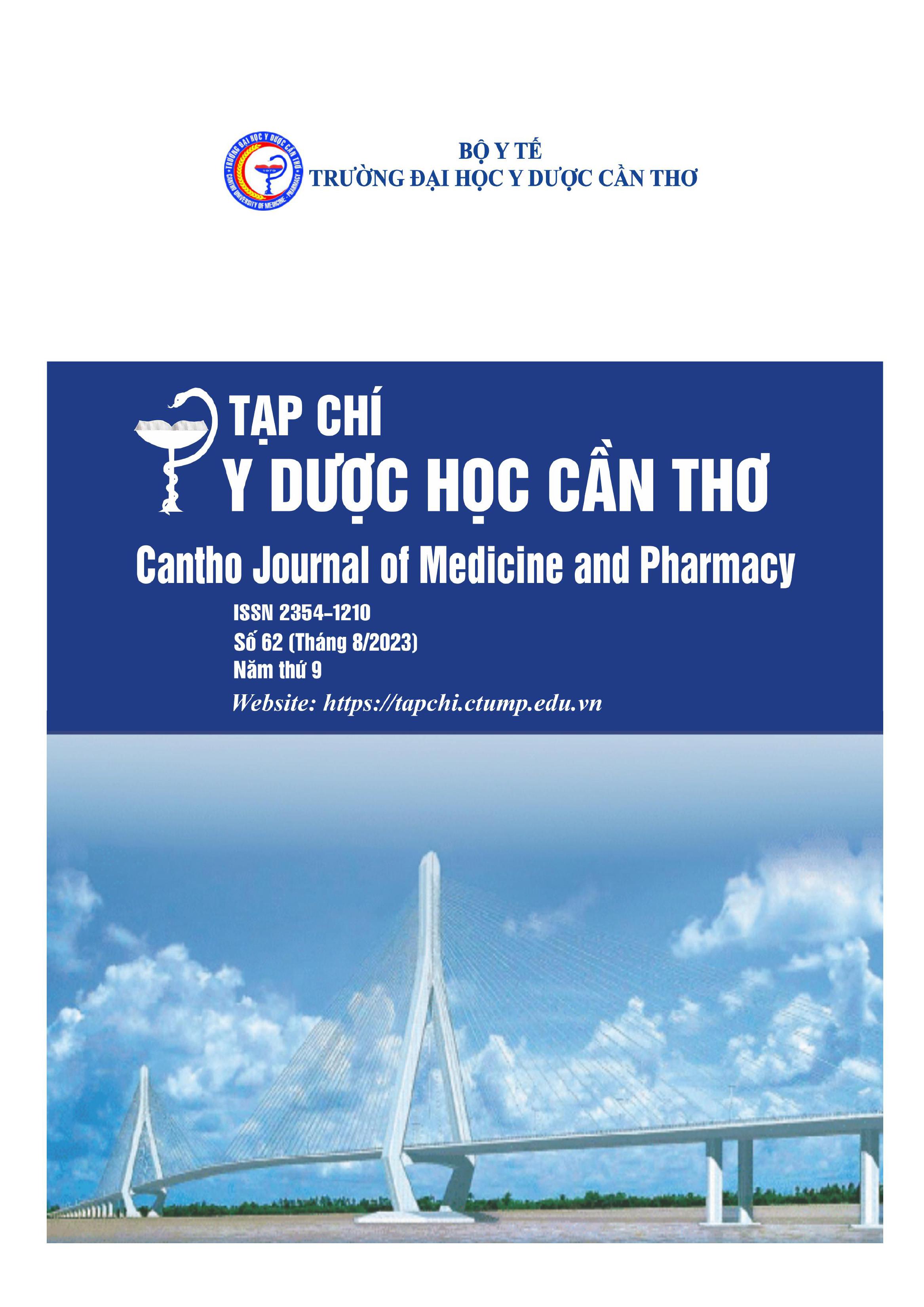RESEARCH ON CHANGES OF CEREBROSPINAL FLUID IN NEONATES WITH SEVERE INFECTIONS
Main Article Content
Abstract
Background: Neonates with severe infections are the subject of concern. Bacterial meningitis is one of the most serious infectious diseases of the central nervous system in neonates. Lumbar puncture and analysis of cerebrospinal fluid (CSF) play an important role in the diagnosis.
Objectives: To describe some clinical and paraclinical characteristics of neonates with severe infections; to determine the change of CSF componentsin infants with severe infections and describe the relationship of CSF characteristics with clinical and subclinical features. Materials and method: A cross-sectional description study was conducted on 60 infants with severe infections at the Neonatal Department of Can Tho Children's Hospital from March 2021 to March 2023. Results: Most children had late-onset (58.3%). The most common clinical manifestations were fever (61.7%), lethargy (45%), jaundice (43.3%), and tachypnea (38.3%). Most of the leukocytes were at normal level (accounting for 66.7%), increased CRP accounted for 62.2%. The most changes in CSF components belonged to increased protein (61.7%) and increased cell (56.7%); decreased glucose was uncommon (6.7%). The ratio of CSF to serum glucose was affected by lethargy (p=0.020) and CRP value (p=0.016). Conclusion: More than half of newborns with severe infections have changes in the composition of CSF, mainly in cells and proteins. Therefore, it is necessary to perform lumbar puncture in neonates with severe infectious disease and analyze CSF changes for timely diagnosis and treatment of meningitis.
Article Details
Keywords
cerebrospinal fluid, bacterial meningitis, neonate
References
2. Bundy L M, Rajnik M, Noor A. Neonatal Meningitis. In StatPearls, StatPearls Publishing Copyright © 2022, StatPearls Publishing LLC.: Treasure Island (FL), 2023.
3. Mehmet Şah, İ. Neonatal Bacterial Meningitis. In Neonatal Medicine, Antonina, I.C., Ed. IntechOpen: Rijeka. 2019. 10.5772/intechopen.87118p. Ch. 3.
4. Nguyễn Thị Quỳnh Nga. Đặc điểm lâm sàng, cận lâm sàng của viêm màng não nhiễm khuẩn ở trẻ sơ sinh. Tạp chí Nhi khoa. 2021. 14, 61-68.
5. El-Naggar, W.; Afifi, J.; McMillan, D.; Toye, J.; Ting, J.; Yoon, E.W.; Shah, P.S. Epidemiology of Meningitis in Canadian Neonatal Intensive Care Units. The Pediatric infectious disease journal. 2019. 38, 476-480, doi:10.1097/inf.0000000000002247.
6. American Academy of Pediatrics. Group B Streptococcal infections. In Red Book: 2021-2024 Report of the Committee on Infectious Diseases, 32nd ed.; Kimberlin, D.W., Long, S.S., Brady, M.T., Jackson, M.A., Eds. American Academy of Pediatrics: Itasca IL, 2021-2024; 707-712. 7. Phạm Thị Phương. Nghiên cứu một số đặc điểm dịch tễ lâm sàng, cận lâm sàng và bước đầu nhận xét kết quả điều trị bệnh viêm màng não mủ ở trẻ em sơ sinh Bệnh viện Nhi Thanh Hóa. Tạp chí Nghiên cứu và Thực hành Nhi khoa. 2020, 4, 38-43.
8. Liu, G.; He, S.; Zhu, X.; Li, Z. Early onset neonatal bacterial meningitis in term infants: the clinical features, perinatal conditions, and in-hospital outcomes: A single center retrospective analysis. Medicine. 2020, 99, e22748, doi:10.1097/md.0000000000022748.
9. Stocker, M.; van Herk, W.; El Helou, S.; Dutta, S.; Schuerman, F.; van den Tooren-de Groot, R.K.; Wieringa, J.W.; Janota, J.; van der Meer-Kappelle, L.H.; Moonen, R., et al. C-Reactive Protein, Procalcitonin, and White Blood Count to Rule Out Neonatal Early-onset Sepsis Within 36 Hours: A Secondary Analysis of the Neonatal Procalcitonin Intervention Study. Clinical infectious diseases : an official publication of the Infectious Diseases Society of America. 2021, 73, e383-e390, doi:10.1093/cid/ciaa876.
10. Zimmermann, P.; Curtis, N. Normal Values for Cerebrospinal Fluid in Neonates: A Systematic Review. Neonatology. 2021, 118, 629-638, doi:10.1159/000517630.
11. Ku, L.C.; Boggess, K.A.; Cohen-Wolkowiez, M. Bacterial meningitis in infants. Clin Perinatol. 2015, 42, 29-45, vii-viii, doi:10.1016/j.clp.2014.10.004.
12. Garges, H.P.; Moody, M.A.; Cotten, C.M.; Smith, P.B.; Tiffany, K.F.; Lenfestey, R.; Li, J.S.; Fowler, V.G., Jr.; Benjamin, D.K., Jr. Neonatal meningitis: what is the correlation among cerebrospinal fluid cultures, blood cultures, and cerebrospinal fluid parameters? Pediatrics. 2006, 117, 1094-1100, doi:10.1542/peds.2005-1132.
13. Swanson, D. Meningitis. Pediatrics in review. 2015, 36, 514-524; quiz 525-516, doi:10.1542/pir.36-12-514.
14. Dutta, S.; Sachdeva, N.; Pal, A.; Ray, P. Cerebrospinal fluid and plasma procalcitonin for the diagnosis of neonatal bacterial meningitis. Journal of paediatrics and child health. 2022, 58, 1425-1430, doi:10.1111/jpc.16023.


